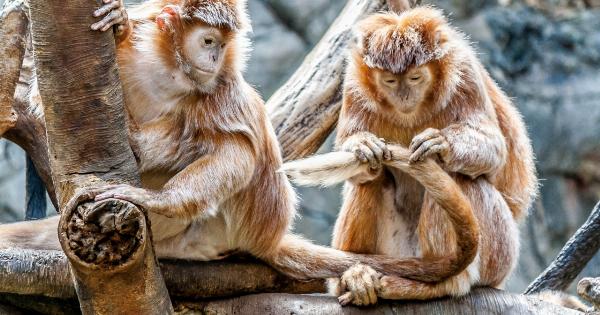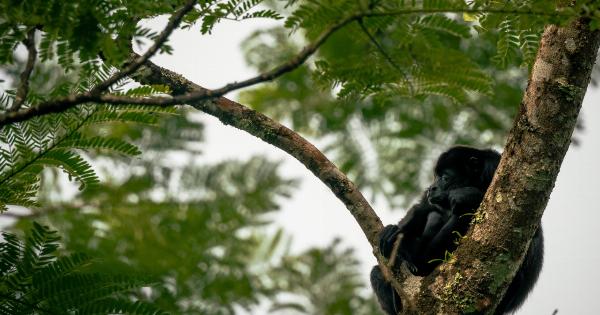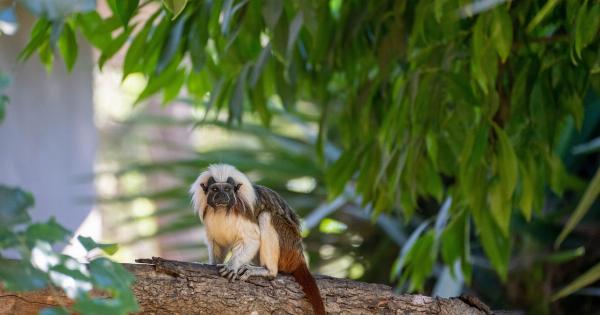In recent years, Spain has become a hotspot for monkey enthusiasts and nature lovers alike. With its diverse landscape and favorable climate, it has attracted numerous primate species, resulting in a thriving monkey population.
In recent news, it has been reported that the monkey population in Spain has reached a staggering number of 84 individuals. This increase in population has sparked both excitement and concern among researchers and the general public.
The Monkey Invasion
The increase in the monkey population can be attributed to several factors. One of the main reasons is the abundance of food sources available in Spain. The country’s fertile lands and rich vegetation provide a suitable habitat for these primates.
Additionally, the absence of natural predators has allowed the monkey population to flourish without any significant threat to their survival.
The introduction of non-native species and their subsequent reproduction has also contributed to the growing monkey population in Spain. In some cases, monkeys have been brought into the country as exotic pets or for scientific research.
However, due to various reasons, these monkeys have either escaped or were purposely released into the wild. Their adaptability and reproductive capabilities have enabled them to establish thriving populations in different regions of Spain.
Ecological Impact
While the growing monkey population may seem like a fascinating phenomenon, it has raised concerns about its potential ecological impact.
The presence of a large number of monkeys can result in various ecological consequences, such as competition for resources with native species. Monkeys may also disrupt the natural balance by predating on certain plant species or spreading diseases to other animals.
Furthermore, the destruction of crops and gardens by monkeys has become a cause of frustration for local farmers and residents. Monkeys have been known to raid fruit trees, destroy agricultural fields, and even enter residential areas in search of food.
These actions have led to conflicts between humans and monkeys, posing challenges to coexistence.
Management and Conservation Efforts
Given the potential issues associated with the increasing monkey population, various management and conservation efforts have been implemented.
These efforts aim to strike a balance between preserving biodiversity and managing potential conflicts between humans and monkeys.
One approach is the establishment of protected areas where monkeys can thrive without causing significant disruption to human activities.
These protected areas serve as natural habitats for the monkeys while also attracting nature enthusiasts and ecotourism, contributing to the local economy.
Another strategy involves implementing population control measures. This can include sterilization programs to prevent excessive breeding and the relocation of monkeys to areas with lower population densities.
Balancing the monkey population ensures the sustainability of the species while minimizing negative impacts on the environment and other species.
The Importance of Research
Research plays a vital role in understanding and managing the growing monkey population in Spain.
By studying their behavior, habitat requirements, and interactions with other species, researchers can develop effective strategies for conservation and population management.
Moreover, research provides valuable insights into the ecosystem dynamics and the potential long-term effects of the monkey population on the environment.
This information is crucial for decision-makers and policymakers to develop sustainable management plans that protect both the interests of humans and the welfare of the monkeys.
Future Outlook
With the monkey population in Spain reaching 84 individuals, it is imperative to continue monitoring and studying this phenomenon.
Striking a balance between conservation efforts and managing potential conflicts will be essential for the sustainable coexistence of humans and monkeys.
Public awareness campaigns and educational initiatives can also help foster understanding and empathy towards monkeys.
By educating the public about their importance in the ecosystem and the ways to coexist peacefully, it is possible to reduce conflicts and promote conservation efforts.
Ultimately, the management of the monkey population in Spain requires a multidisciplinary approach that involves ecologists, biologists, policymakers, and the local community.
Only through collaborative efforts can Spain successfully navigate the challenges and opportunities presented by its monkey population.































